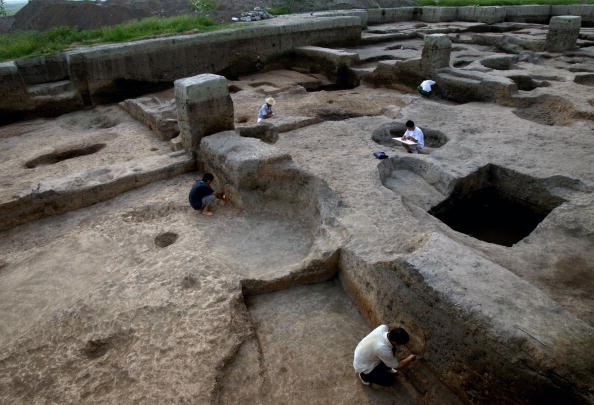
Last month, archaeologist from Trinity College Dublin published a paper detailing their research on several skeletons found in an ancient burial site in York, England. The remains are believed to be from gladiators from the 4th century AD who seemed to have met their demise at hands of either a large carnivore or through mercy killing. Archaeologists agree that the site is one of the more gruesome recent ancient discoveries. However it seems like there is more prehistoric grisliness left to be unearthed.
Just a little over a month ago, archaeologists from the University of Strasbourg in France published a paper in the Cambridge journal, Antiquity, that explored an ancient burial pit located in Bergheim near the German border. The site which is dubbed as "Silo 157," is filled to the brim with not only seven skeletons but also a collection of amputated upper left arms. The site, which is 2 meters deep and 1.5 meters wide, is believed to date back from 4,500 and 3,500 BC. It contained the bones of two adult males, one adult female and four children between the ages of 10 and 13 years old.
""The discovery of Bergheim is the witness of a very violent event, which took place at a specific time. Its unique and extraordinary nature does not allow or help us to better understand the daily life of these people" explained Fanny Chenal, co-author of the paper.
The scientists further detail the careless manner in which the bodies were thrown in the pit. According to them, all bones show signs of amputations made from either a knife or an axe.
Chenal and the rest of her team have since explained how crucial the discovery is to the study of Neolithic area. According to Chenal, ancient daily life used to be painted as Utopian. However given the new discovery, it seems like ancient humans had to lead a darker more gruesome life.
"While in the past, archaeologists painted a picture of Neolithic life as idyllic and egalitarian, newer finds paint a far darker picture" explained Chenal.



